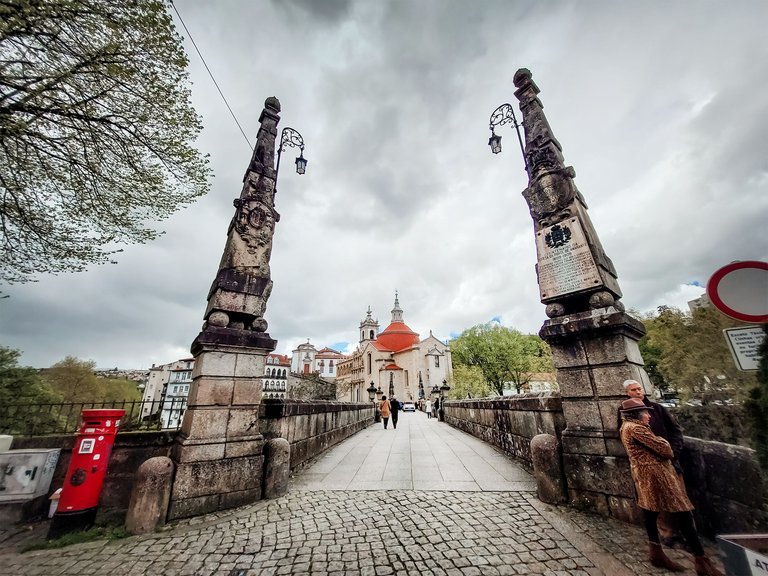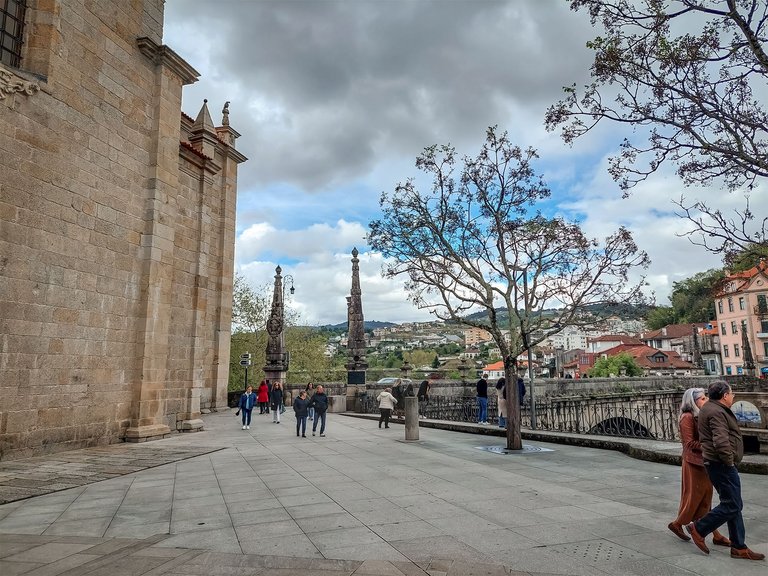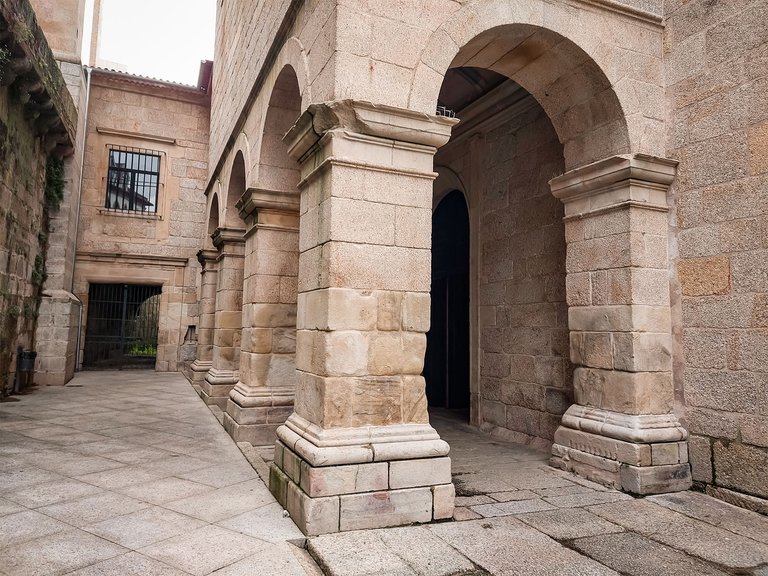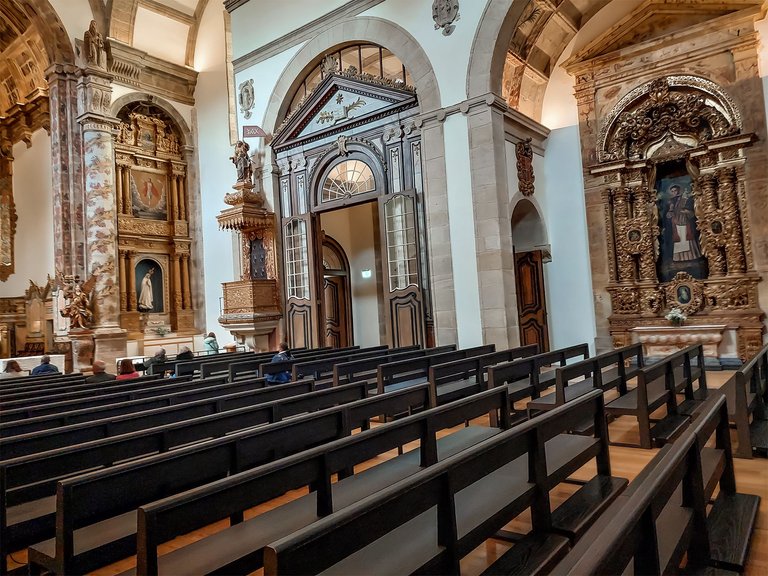Bridge, Church and Monastery of São Gonçalo - Amarante City
Hello everyone and welcome to my blog :-)

One of the things that marks the city of Amarante is the São Gonçalo bridge over the Tâmega river.
The passage of time and historical events gave the Bridge a unique status as a symbol of Amarante's identity and a source of pride for the municipality.
The name of the bridge is linked to its builder - São Gonçalo de Amarante. This was built with the help of the population and, according to history, through a series of miracles. According to popular belief, the saint moved the largest stones and summoned fish to feed the workers.
PT
Uma das coisas que marca a cidade de Amarante é a ponte de São Gonçalo sobre o rio Tâmega.
O decorrer do tempo e dos eventos históricos conferiram à Ponte um estatuto singular como símbolo de identidade amarantina e uma fonte de orgulho para o concelho.
O nome da ponte está ligado ao seu construtor - São Gonçalo de Amarante. Esta foi erguida com a ajuda da população e, segundo reza a história, através de uma série de milagres. Segundo a crença popular, o santo movia as maiores pedras e convocava os peixes para alimentar os trabalhadores.










In 1763, the bridge collapsed due to heavy rain. However, by luck or perhaps a miracle, the Gothic image of Nossa Senhora da Piedade, which was on a cruise in the passage, remained intact. Currently, it is preserved in part of the church, overlooking the new bridge that was rebuilt.
The bridge became a place of encounter with history as it served as a setting for the heroic struggle and national resistance against Napoleonic troops during the French invasions. A tombstone, placed in one of the bridge's pyramids, remembers this event, which resulted in the municipality being awarded the necklace of the Military Order of the Tower and Sword.
PT
Em 1763, a ponte desabou devido a fortes chuvas. No entanto, por sorte ou quem sabe milagre, a imagem gótica de Nossa Senhora da Piedade, que estava num cruzeiro na passagem, ficou intacta. Atualmente, encontra-se preservada numa parte da igreja, com vista para a nova ponte que foi reconstruída.
A ponte tornou-se um local de encontro com a história ao servir de cenário para a luta heróica e resistência nacional contra as tropas napoleónicas durante as invasões francesas. Uma lápide, colocada numa das pirâmides da ponte, recorda este evento, que resultou na atribuição ao concelho do colar da Ordem Militar da Torre e Espada.




50 meters long, the bridge has a deck with four semicircular balconies and, at each end, there are two baroque obelisks with epigraphic inscriptions. These conjure up the battles against the Napoleonic forces and the honor brought to Amarante by Portugal's victory.
As soon as we cross the bridge we have the São Gonçalo Monastery in front of us. Imposing, it makes us spend a long time admiring its facade and keeping our heads up to appreciate every detail. He was the one who protected us from the rain that started to come out.
PT
Com 50 metros de comprimento, a ponte possui um tabuleiro com quatro varandins semicirculares e, em cada extremidade, existem dois obeliscos barrocos com inscrições epigráficas. Estas conjuram os combates contra os napoleónicos e a honra trazida a Amarante pela vitória de Portugal.
Assim que atravessamos a ponte temos na nossa frente o Mosteiro de São Gonçalo. Imponente, faz com que fiquemos um bom tempo a admirar a sua fachada e com a cabeça levantada para apreciar cada detalhe. Foi quem nos resguardou da chuva que começou a sair.





We entered and there were some faithful praying, so we walked in silence. But I can say that I never remembered seeing such a beautiful Monastery and it has been considered a national monument since 1910.
The first stone was placed in 1543 - interestingly, in the exact place where a hermitage had already been erected in honor of the patron saint, São Gonçalo.
Construction lasted 80 years, spanning several reigns and absorbing - throughout the different construction phases - influences from different architectural styles. The richness and diversity of the convent are reflected in the varied 19th century, Renaissance, Baroque and Mannerist elements.
PT
Entramos e existiam alguns fiéis a rezar, pelo que caminhamos em silêncio. Mas posso dizer que já não me lembrava de ver um Mosteiro tão bonito e é considerado monumento nacional desde 1910.
A primeira pedra foi colocada em 1543 - curiosamente, no exato local onde já havia sido erguida uma ermida em homenagem ao padroeiro, São Gonçalo.
A construção prolongou-se por 80 anos, atravessando vários reinados e absorvendo - ao longo das diferentes fases de construção - influências de diversos estilos arquitetónicos. A riqueza e a diversidade do convento refletem-se nos variados elementos oitocentistas, renascentistas, barrocos e maneiristas.








The main facade contrasts with the side, which stands out for the Balcony of the Kings, where there are statues of four monarchs - D. João III, D. Sebastião, Cardinal-Rei D. Henrique and D. Filipe I.
On the lower floor, S. Francisco and S. Domingos stand out.
On the second floor we have six columns with Corinthian capitals that support the floor and where the stone sculpture of São Gonçalo is located.
Right next door is a museum that represents a center of culture: the Amadeo de Souza-Cardoso Municipal Museum.
I'll be back tomorrow with a little more of Amarante to show you.
PT
A fachada principal contrapõe com a lateral, que se destaca pela Varanda dos Reis, onde se encontram as estátuas de quatro monarcas - D. João III, D. Sebastião, Cardeal-Rei D. Henrique e D. Filipe I.
No piso inferior, destacam-se S. Francisco e S. Domingos.
No segundo piso temos seis colunas com capitéis coríntios que suportam o andar e onde se encontra a escultura em pedra de São Gonçalo.
Mesmo aqui ao lado encontra-se um museu que representa um centro de cultura: o Museu Municipal Amadeo de Souza-Cardoso.
Volto amanhã com mais um bocadinho de Amarante para vos mostrar.
I hope you enjoyed.
See you around.
Wishing you much peace and health
Those who pass by us do not go alone. They leave a bit of themselves, taking a piece of us."
Author: Antoine de Saint-Exupery, The Little Prince.

Congratulations, your post has been added to Pinmapple! 🎉🥳🍍
Did you know you have your own profile map?
And every post has their own map too!
Want to have your post on the map too?
What a fascinating historic city! You've captured the interior of the church/monastery so well, it is absolutely beautiful.
Thank you for sharing São Gonçalo - Amarante with us!
Hi there @lizelle :-) It really is indeed a beautiful city and full of meaning. Thank you so much for stopping by 😊